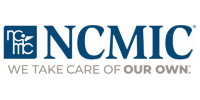“The most recent research (Neck Pain Task Force Report of the Bone and Joint Decade 2000-2010, a study sanctioned by the United Nations and the World Health Organization) indicates neck manipulation is a safe and effective form of health care,” according to Matt Pagano, DC, chiropractic profession spokesperson.
Respected researcher and epidemiologist J. David Cassidy, DC, PhD, DrMedSc, testified as a key witness last week at the hearings on informed consent before the Connecticut Board of Chiropractic Examiners in Hartford, Conn. Speaking as an expert witness and consultant to the International Chiropractors Association (ICA)—and with the support of all chiropractic organizations involved in the process, including the American Chiropractic Association, Association of Chiropractic Colleges, Foundation for Chiropractic Progress, Life West, New York College of Chiropractic, Parker College of Chiropractic, Palmer College of Chiropractic, and the University of Bridgeport College of Chiropractic—Dr. Cassidy addressed key facts and issues on the basis of the existing science and research record, to which he has been a significant contributor. The objective of his testimony was to bring the discussion from an emotional issue back to science and the objective research record.
Dr. Cassidy joined an extensive list of witnesses representing the chiropractic profession, including William J. Lauretti, DC; James J. Lehman, DC, MBA; J. Clay McDonald, DC, JD, MBA; Gerard W. Clum, DC; Stephen M. Perle, DC, MS; Gina Carucci, DC, MS, DICCP, who appeared on behalf of the Connecticut Chiropractic Association (CCA); and George Curry, DC, FICA, who appeared on behalf of the Connecticut Chiropractic Council (CCC).
“The chiropractic profession unequivocally supports a patient’s right to be informed of the material benefits and risks of any type of health care treatment – not just chiropractic. Legislation or regulatory mandates governing informed consent should apply to all health care providers and all treatments in equal measure. However, a new law, regulation or mandate highlighting one specific treatment by a specific health care profession, which carries with it an extremely rare association and no causal link identified in the research, is simply not good public health policy. It would set an unnecessary precedent for all health care providers, procedures and products that would be virtually impossible to implement,” said Pagano.
The existing informed consent standards in Connecticut allow for the best opportunity for shared decision making between a patient and his or her health care provider. Further, the chiropractic organizations participating in the hearing process all believe informed consent is more than a piece of paper; it is a process. It should occur in the context of a discussion between a doctor and a patient, and it should be appropriately documented.
In a finding highly relevant to the issue before the Connecticut Board of Chiropractic Examiners, the Neck Pain Task Force study demonstrated that patients suffering from headache and neck pain are no more likely to suffer from a stroke following a visit to a chiropractor than they are after a visit to a family medical physician. This implies that there are factors involved other than the type of care provided by doctors of chiropractic. It’s important to note that millions of patients safely benefit from chiropractic care every year—they are able to return to their normal activities and enjoy a better quality of life.
Dr. Cassidy was an investigator with the Bone and Joint Decade 2000-2010 Task Force on Neck Pain and Its Associated Disorders. The work of this international task force affirms the safety and benefits of chiropractic care for people with neck pain—a condition frequently treated by doctors of chiropractic. The Task Force initiated this new population-based, case-control and case-crossover study, which appeared in the Feb. 15, 2008 edition of the journal Spine.
The study, which analyzed nine years’ worth of data from a population of 110-million person years, concluded that vertebrobasilar artery (VBA) stroke is a very rare event and that the risk of VBA stroke following a visit to a chiropractor’s office appears to be no different than the risk of VBA stroke following a visit to the office of a primary care medical physician (PCP).
The study goes on to say that any observed association between VBA stroke and chiropractic manipulation—as well as its apparent association with PCP visits—is likely due to patients with an undiagnosed vertebral artery dissection seeking care for neck pain and headache prior to their stroke.
Over the years, popular media has all too often sensationalized the association between chiropractic cervical manipulation and cerebral vascular accidents—even though the evidence would strongly indicate that this assertion is incorrect. The organizations representing the chiropractic profession believe this most recent evidence should help to dispel any myths on this issue, as well as provide more data to support the safety and effectiveness of chiropractic procedures.
As a profession, doctors of chiropractic remain committed to expanding the research and clinical understanding of VBA injuries, because even one cerebral vascular incident that could have been prevented or detected early is one too many.
- Home
- About
- Find a Doctor
- Membership
- Education
- News
- Newsletter
- Conventions & Symposiums
- Webinars
- Positive Press (F4CP) ↪
- Insurance and Medicare ⚿
- New Practitioners ⚿
- Center for Excellence ⚿
- Informative Links
- Mandated Reporter Training↪
- Leadership
- Officers and Regional Directors
- Districts
- District Officers ⚿
- District Map
- District 1 (Manhattan)
- District 2 (Brooklyn)
- District 3 (Queens)
- District 4 (Bronx)
- District 5 (Staten Island)
- District 6 (Nassau)
- District 7 (Suffolk)
- District 8 (Westchester)
- District 9 (Mid-Hudson)
- District 10 (Capital Region)
- District 11 (Mohawk Valley)
- District 12 (Central NY)
- District 13 (Binghamton Area)
- District 14 (Rockland County)
- District 15 (Finger Lakes)
- District 16 (Southern Tier)
- District 17 (Western NY)
- Committees
- Bylaws ⚿
- Code of Ethics ⚿
- Elections ⚿
- Advocacy
- Sponsors
- Classifieds




